Channel Measurement and Feasibility Test for Wireless Avionics Intra-Communications
Abstract
1. Introduction
- Commercial antennas do not support the WAIC bands (4.2–4.4 GHz), and thus we self-produced monopole antennas to transmit and receive wireless signals at the WAIC bands (see Section 3).
- We performed point-to-point wireless channel measurements and feasibility test of adopting IEEE 802.11 protocol in a real aircraft (KAI KT-1 Woongbi). (Specific reasons why we chose KAI KT-1 Woongbi as our test aircraft are explained in Section 3.) We obtained a power delay profile (PDP) and a root mean square (RMS) delay between measured points (see Section 3 and Section 4).
- We simulated the bit error rate (BER) performance using our measurement data when we considered a candidate sensor network scenario and reliable transmission techniques such as a maximum ratio combining (MRC) and space-time block coding (STBC) schemes (see Section 5).
2. Overview of IEEE 802.11 Physical Layer
2.1. IEEE 802.11 Physical Layer and OFDM
2.2. Channel Estimation
3. Experimental Setup
3.1. Hardware and Software
3.2. Monopole Antenna for 4.2–4.4 GHz
3.3. Measurement Environment
4. Measurement Results
4.1. Data Processing
4.2. Feasibility Test and Power Delay Profile
4.3. Path Loss Measurement
5. Simulations with Measured Data
5.1. Simulation Environments
5.2. Simulation Results
6. Conclusions
Author Contributions
Acknowledgments
Conflicts of Interest
Appendix A. Inside Photos of Measurement Points in the Feasibility Test

References
- AVSI. WAIC: Wireless Avionics Intra-Communications. Available online: http://waic.avsi.aero/ (accessed on 13 February 2019).
- Sámano-Robles, R.; Tovar, E.; Cintra, J.; Rocha, A. Wireless avionics intra-communications: Current trends and design issues. In Proceedings of the Eleventh International Conference on Digital Information Management, Porto, Portugal, 19–21 September 2016; pp. 266–273. [Google Scholar]
- International Telecommunication Union (ITU). ITU-R M.2283. Technical Characteristics and Spectrum Requirements of Wireless Avionics Intra-Communications Systems to Support Their Safe Operation; International Telecommunication Union (ITU): Geneva, Switzerland, 2013. [Google Scholar]
- Graham-Rowe, D. Fly-by-wireless set for take off. New Sci. 2009, 203, 20–21. [Google Scholar] [CrossRef]
- ITU-R. Final Acts WRC-15. Available online: http://www.itu.int/pub/R-ACT-WRC.12-2015 (accessed on 13 February 2019).
- Suryanegara, M.; Raharya, N. Modulation performance in wireless avionics intra communications (WAIC). In Proceedings of the International Conference on Information Technology, Computer and Electrical Engineering, Semarang, Indonesia, 7–8 November 2014; pp. 434–437. [Google Scholar]
- Raharya, N.; Suryanegara, M. Compatibility analysis of wireless avionics intra communications (WAIC) to radio altimeter at 4200–4400 MHz. In Proceedings of the IEEE Asia Pacific Conference on Wireless and Mobile, Bali, Indonesia, 28–30 August 2014; pp. 17–22. [Google Scholar]
- Park, P.; Chang, W. Performance comparison of industrial wireless networks for wireless avionics intra-communications. IEEE Commun. Lett. 2017, 21, 116–119. [Google Scholar] [CrossRef]
- Sekiguchi, T.; Hikage, T.; Futatsumori, S.; Kohmura, A.; Yonemoto, N. A large scale FDTD analysis of propagation characteristics for wireless link design of 4.4 GHz-band WAIC installed on passenger aircraft. In Proceedings of the IEEE USNC-URSI Radio Science Meeting (Joint with AP-S Symposium), Boston, MA, USA, 8–13 July 2018; pp. 153–154. [Google Scholar]
- IEEE 802.11 Working Group. Wireless LAN Medium access Control (MAC) and Physical Layer (PHY) Specifications; IEEE: New York, NY, USA, 2012. [Google Scholar]
- Pozar, D.M. Microwave Engineering; John Wiley & Sons: Hoboken, NJ, USA, 2009. [Google Scholar]
- Balanis, C.A. Antenna theory: A review. Proc. IEEE 1992, 80, 7–23. [Google Scholar] [CrossRef]
- Vlot, A. Glare: History of the Development of a New Aircraft Material; Springer Science & Business Media: Berlin/Heidelberg, Germany, 2007. [Google Scholar]
- Jackson, P. Jane’s All the World’s Aircraft 2003–2004; Jane’s Information Group: Coulsdon, UK, 2003. [Google Scholar]
- Karedal, J.; Wyne, S.; Almers, P.; Tufvesson, F.; Molisch, A.F. A measurement-based statistical model for industrial ultra-wideband channels. IEEE Trans. Wirel. Commun. 2007, 6, 3028–3037. [Google Scholar] [CrossRef]
- Rappaport, T.S. Wireless Communications: Principles and Practice, 2nd ed.; Prentice Hall: Upper Saddle River, NJ, USA, 2002. [Google Scholar]
- Guan, W.; Luo, H.; Chen, W. Linear relaying scheme for MIMO relay system with QoS requirements. IEEE Signal Process. Lett. 2008, 15, 697–700. [Google Scholar] [CrossRef]
- Rong, Y. Multihop nonregenerative MIMO relays—QoS considerations. IEEE Trans. Signal Process. 2011, 59, 290–303. [Google Scholar] [CrossRef]
- Sanguinetti, L.; D’Amico, A.A.; Rong, Y. A tutorial on the optimization of amplify-and-forward MIMO relay systems. IEEE J. Sel. Areas Commun. 2012, 30, 1331–1346. [Google Scholar] [CrossRef]
- Kang, M.; Alouini, M.S. A comparative study on the performance of MIMO MRC systems with and without cochannel interference. IEEE Trans. Commun. 2004, 52, 1417–1425. [Google Scholar] [CrossRef]
- Alamouti, S.M. A simple transmit diversity technique for wireless communications. IEEE J. Sel. Areas Commun. 1998, 16, 1451–1458. [Google Scholar] [CrossRef]
- Tarokh, V.; Jafarkhani, H.; Calderbank, A.R. Space-time block coding for wireless communications: Performance results. IEEE J. Sel. Areas Commun. 1999, 17, 451–460. [Google Scholar] [CrossRef]
- Tarokh, V.; Jafarkhani, H.; Calderbank, A.R. Space-time block codes from orthogonal designs. IEEE Trans. Inf. Theory 1999, 45, 1456–1467. [Google Scholar] [CrossRef]




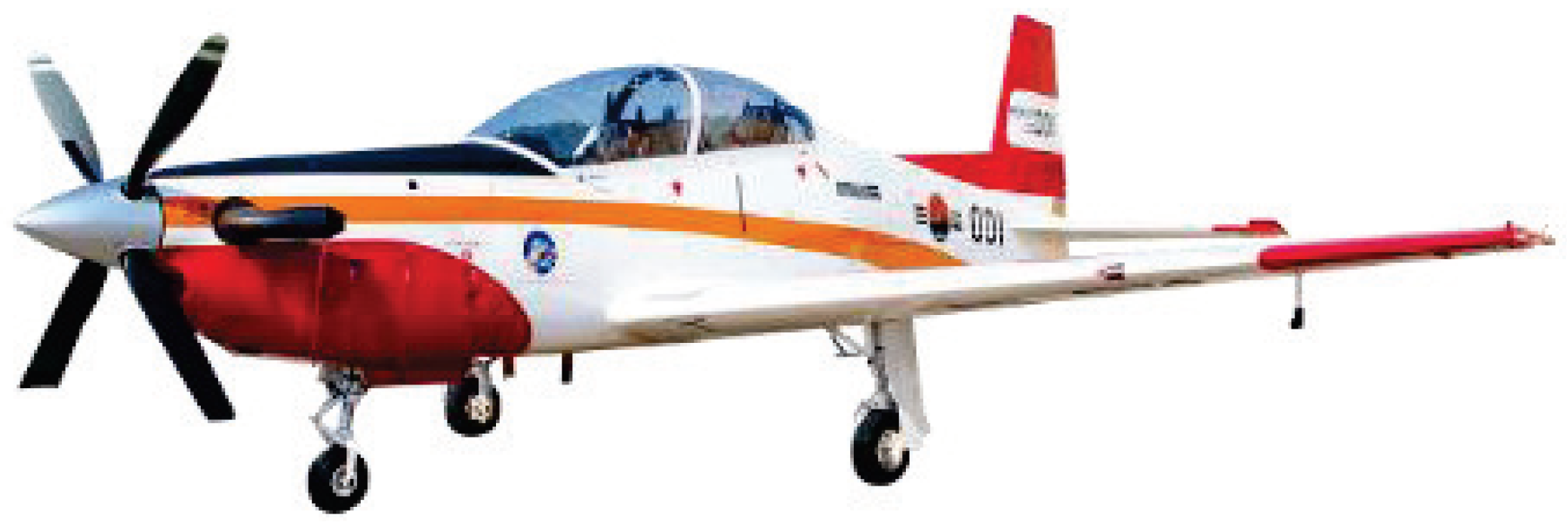
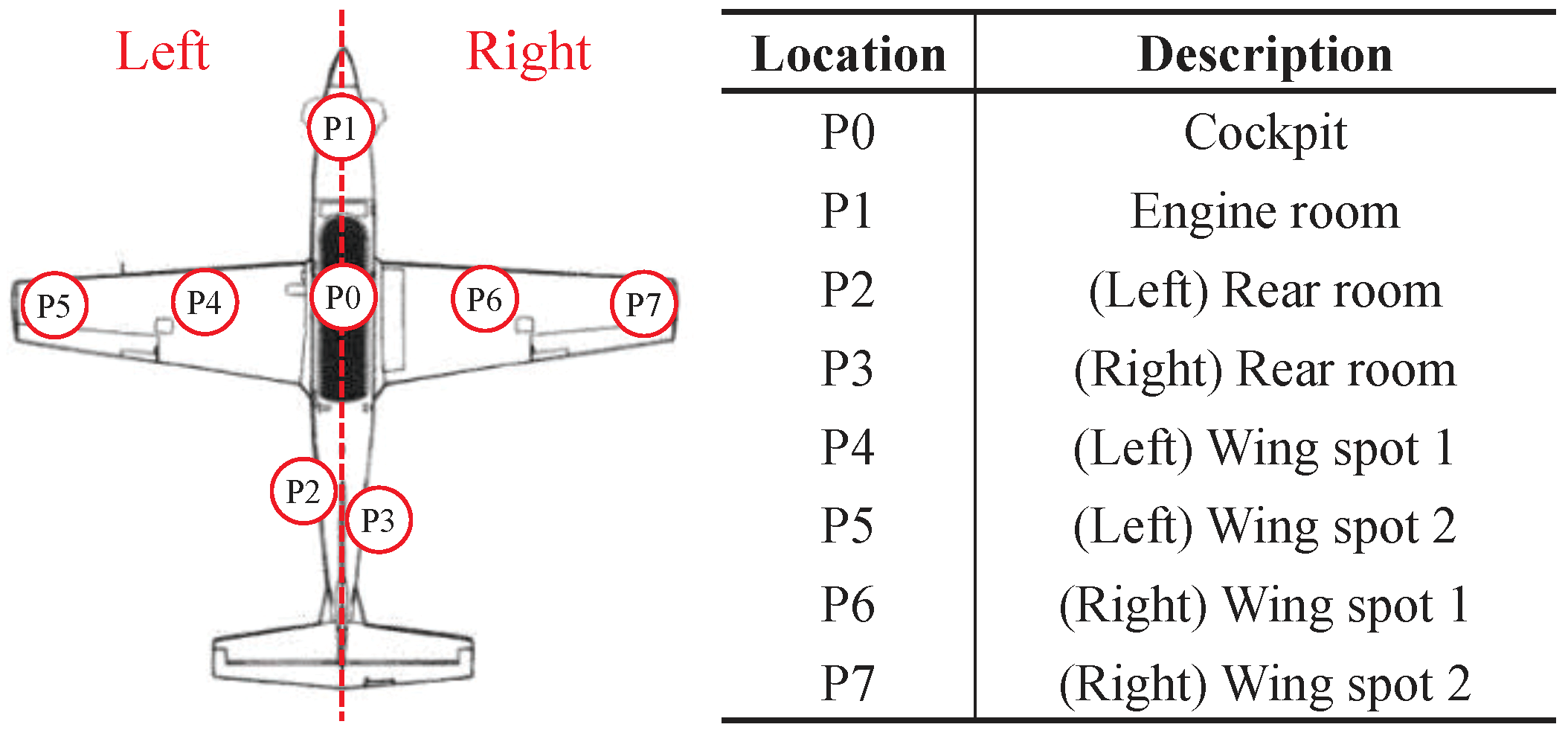
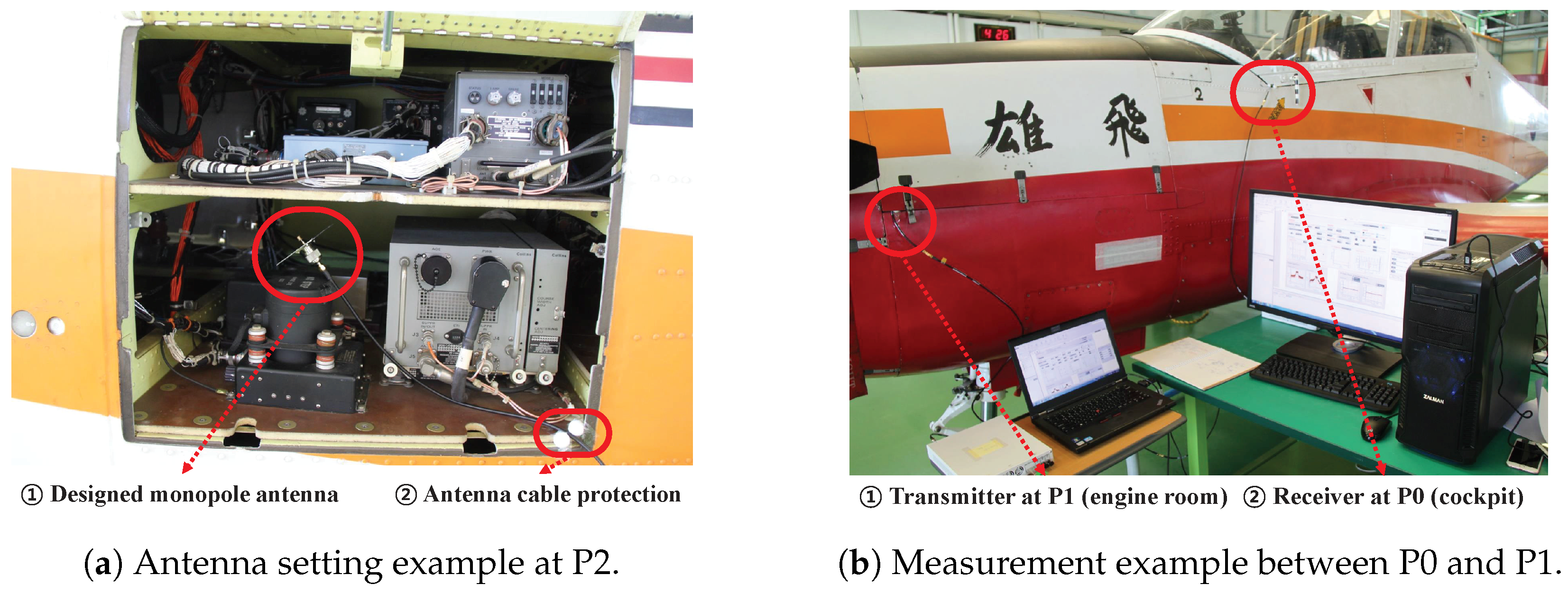

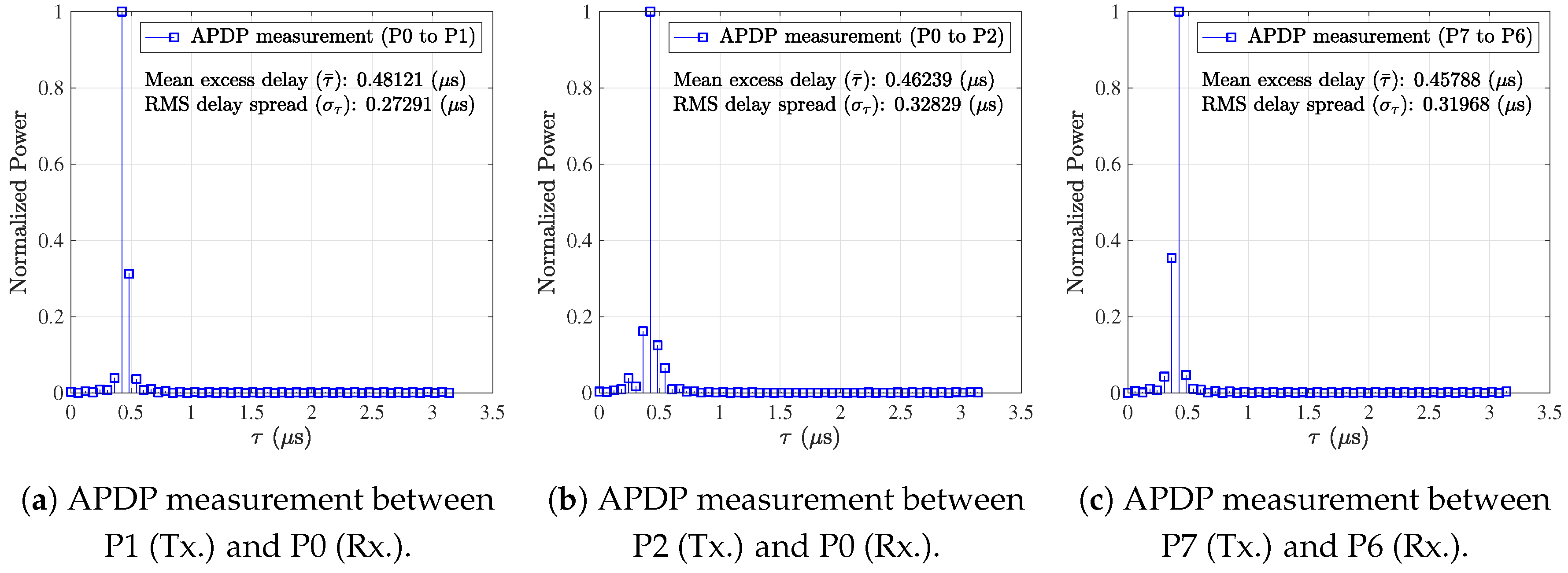

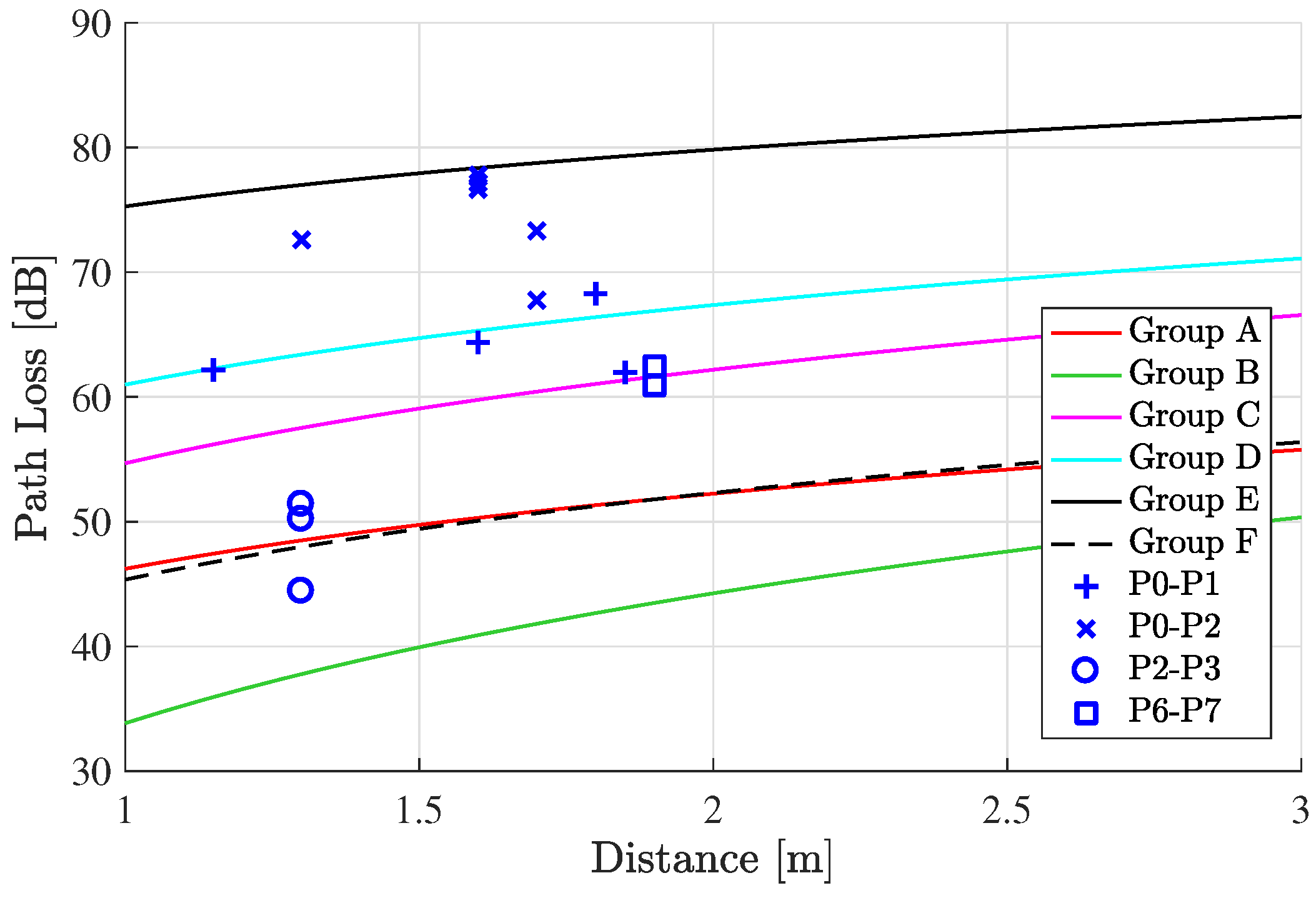
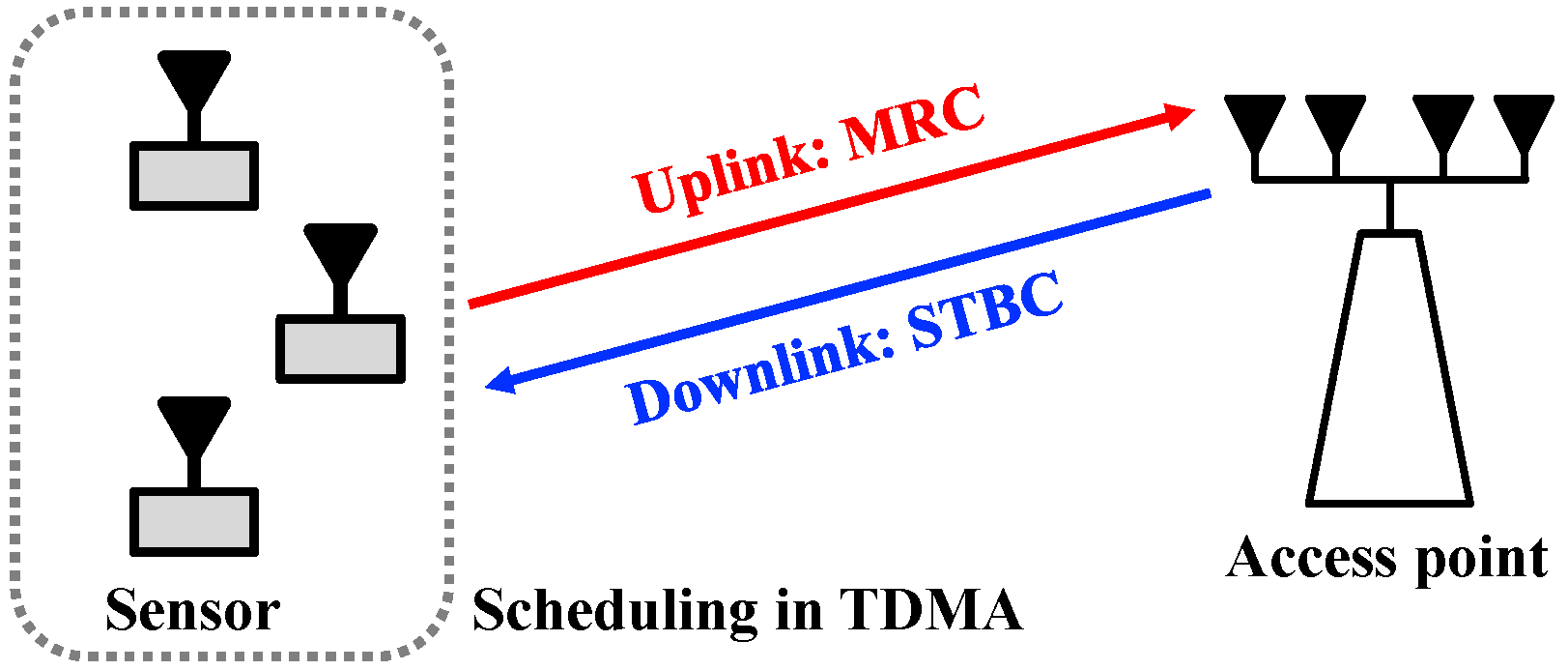
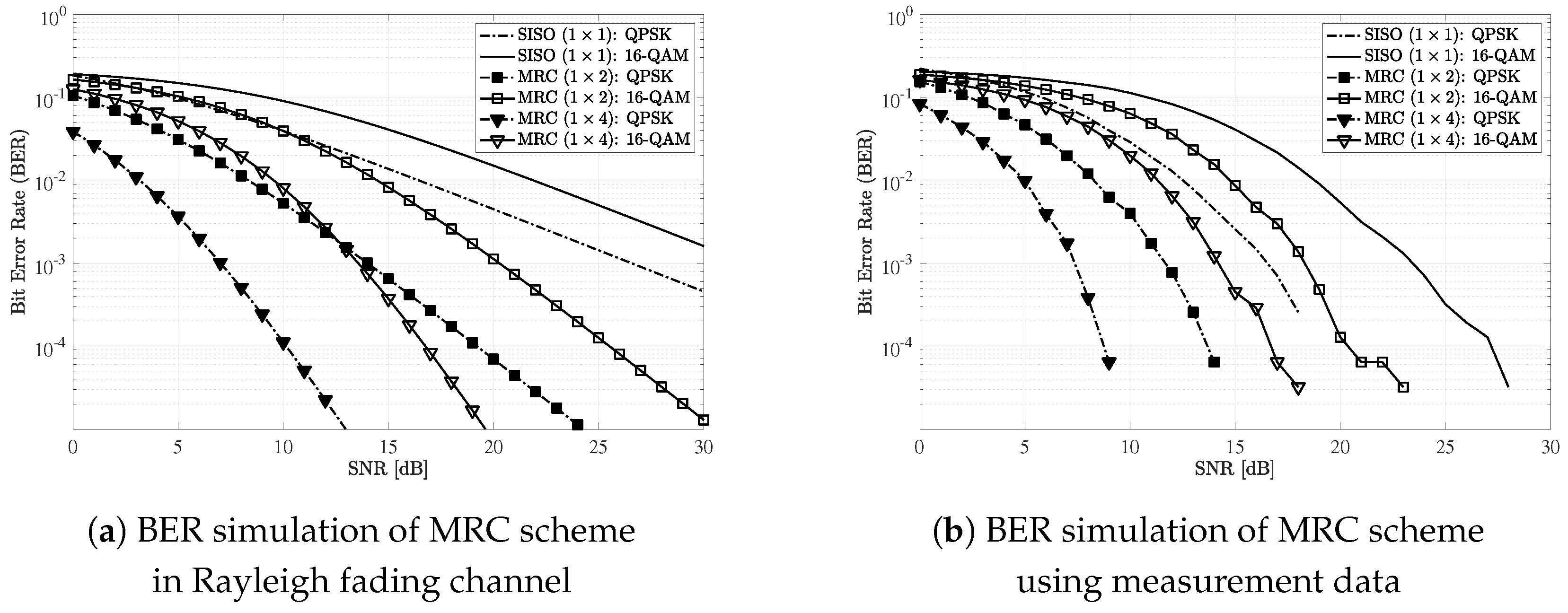
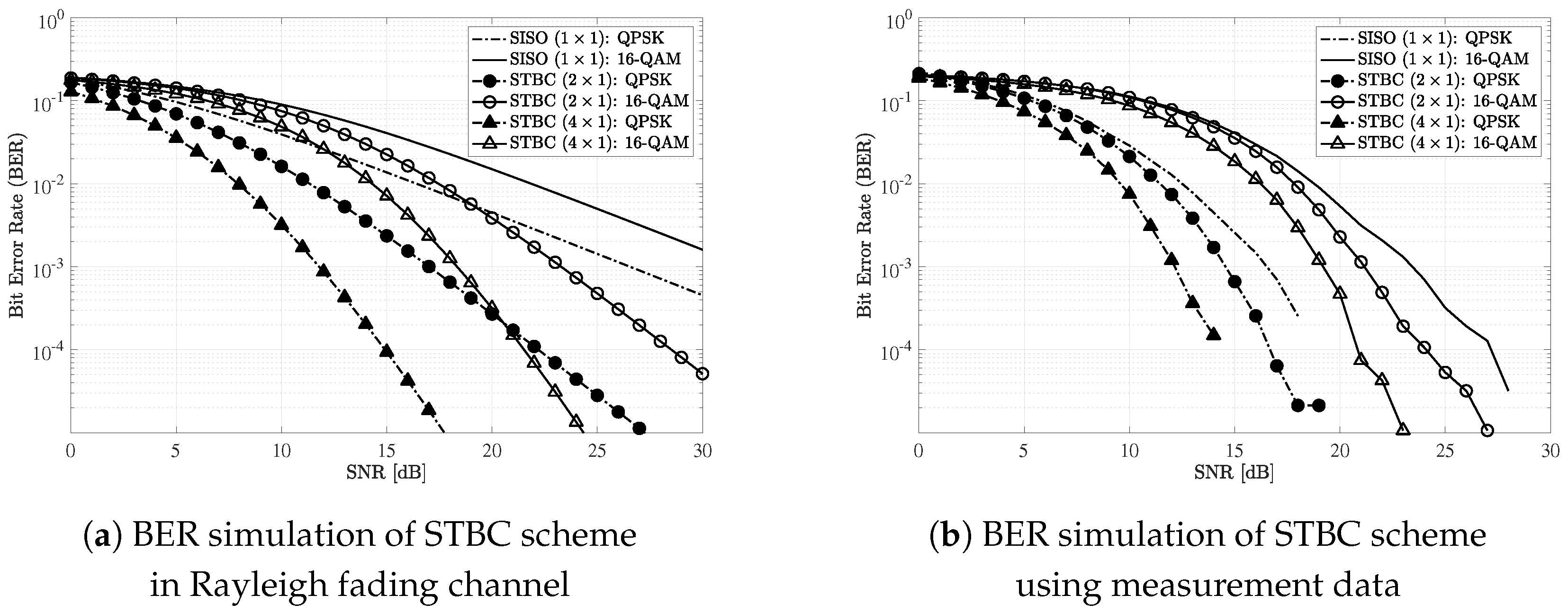
| Parameter | Value |
|---|---|
| Bandwidth | 20 MHz |
| Operating bandwidth | 16.6 MHz |
| Subcarrier spacing () | 31.25 KHz (20 MHz/64) |
| FFT period () | |
| Guard interval () | |
| OFDM symbol duration | |
| Data rate | 6/9/12/18/24/36/48/54 Mbps |
| Modulation | BPSK, QPSK, 16QAM, 64QAM |
| Coding rate | 1/2, 2/3, 3/4 |
| Total subcarriers | 52 (Freq. index: to ) |
| Data subcarriers | 48 |
| Pilot subcarriers | 4 (Freq. index: , , , ) |
| DC subcarriers | Null (Freq. index: 0) |
| Item | Description |
|---|---|
| Crew | two in tandem |
| Length | 10.26 m |
| Wingspan | 10.59 m |
| Height | 3.68 m |
| Wing area | 16.01 m2 |
| Empty weight | 1910 kg |
| Loaded weight | 2540 kg |
| Max. takeoff weight | 3331 kg |
| Powerplant | Pratt & Whitney Canada PT6A-62 |
| Classification | Locations |
|---|---|
| Region 1 | P0, P1 |
| Region 2 | P0, P2, P3 |
| Region 3 | P4, P5 |
| Region 4 | P6, P7 |
© 2019 by the authors. Licensee MDPI, Basel, Switzerland. This article is an open access article distributed under the terms and conditions of the Creative Commons Attribution (CC BY) license (http://creativecommons.org/licenses/by/4.0/).
Share and Cite
Bang, I.; Nam, H.; Chang, W.; Kim, T.; Woo, J.-M.; Kim, C.-Y.; Ban, T.-W.; Park, P.; Jung, B.C. Channel Measurement and Feasibility Test for Wireless Avionics Intra-Communications. Sensors 2019, 19, 1294. https://doi.org/10.3390/s19061294
Bang I, Nam H, Chang W, Kim T, Woo J-M, Kim C-Y, Ban T-W, Park P, Jung BC. Channel Measurement and Feasibility Test for Wireless Avionics Intra-Communications. Sensors. 2019; 19(6):1294. https://doi.org/10.3390/s19061294
Chicago/Turabian StyleBang, Inkyu, Hyunwoo Nam, Woohyuk Chang, Taehoon Kim, Jong-Myung Woo, Choul-Young Kim, Tae-Won Ban, Pangun Park, and Bang Chul Jung. 2019. "Channel Measurement and Feasibility Test for Wireless Avionics Intra-Communications" Sensors 19, no. 6: 1294. https://doi.org/10.3390/s19061294
APA StyleBang, I., Nam, H., Chang, W., Kim, T., Woo, J.-M., Kim, C.-Y., Ban, T.-W., Park, P., & Jung, B. C. (2019). Channel Measurement and Feasibility Test for Wireless Avionics Intra-Communications. Sensors, 19(6), 1294. https://doi.org/10.3390/s19061294







